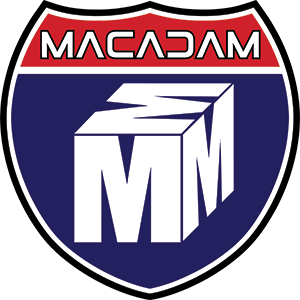Concrete surfaces, no matter how durable, will eventually need some level of maintenance to perform their best for years to come.
Normal wear and tear from daily use, UV radiation from the sun, chemical spills, rain, temperature changes, and other environmental stressors all play a role in the erosion of your concrete surface.
Concrete overlays can help alleviate some of the damage, enhance or change appearance, and correct surface irregularities, all while being cost-effective and creating minimal disruption to use of the surface.
Please keep in mind that this service is only for concrete surfaces that are structurally sound and only involve surface level damage.
A concrete overlay can be helpful in various situations where an existing concrete surface requires improvement, restoration, or transformation. Here are some examples:
- Surface Damage and Deterioration: If the existing concrete surface has minor to moderate surface damage, such as cracks, spalling, scaling, or surface wear, a concrete overlay can be an effective solution. The overlay covers up the damage, providing a fresh, smooth, and visually appealing surface.
- Surface Enhancement: A concrete overlay can enhance the performance and durability of a concrete surface. It can improve resistance to abrasion, impact, chemicals, stains, and UV degradation. This is particularly useful in high-traffic areas, commercial or industrial settings, or environments where the original concrete surface lacks adequate protection.
- Aesthetic Upgrades: Concrete overlays offer an opportunity to transform the appearance of a concrete surface. They can be used to add decorative patterns, textures, colors, or even replicate the look of natural materials like stone, tile, or wood. Overlays allow for customization and can significantly enhance the aesthetics of various spaces, including driveways, patios, walkways, or pool decks.
- Surface Correction and Leveling: If the existing concrete surface has minor unevenness, roughness, or surface irregularities, a concrete overlay can be used to correct these issues. The overlay can be applied to level the surface, fill in low spots, or create a smooth and even surface for improved functionality and aesthetics.
- Repairing Surface Cracks: Applying an overlay fills and conceals surface cracks, preventing further water infiltration and potential damage. This extends the lifespan of the concrete surface and improves its structural integrity.
- Quick Installation and Minimal Disruption: Concrete overlays offer a faster and less disruptive alternative to complete concrete replacement. The overlay process involves minimal demolition or removal of the existing concrete, resulting in reduced construction time, less debris, and minimal disruption to the surrounding area. This is advantageous for projects that require a quick turnaround or need to maintain access to the space.
- Cost-Effectiveness: Concrete overlays are often more cost-effective compared to complete concrete replacement. By utilizing the existing concrete as a base, the costs associated with excavation, removal, and disposal of the old concrete are avoided.
It’s important to note that the suitability of a concrete overlay depends on the condition and structural integrity of the existing concrete surface. Proper surface preparation, including cleaning, repair of major defects, and assessment of the substrate, is crucial to ensure a successful overlay installation and long-term performance. We recommend starting with a consultation with our concrete contractors to determine the feasibility and best approach for your concrete overlay project.


